When the leaves of my Japanese plums (Prunus salicina) change color and fall off, it’s time for fall pruning. The goal is to remove branches that have reached the desired thickness and wire branches that are soft enough to bend.
Here’s an example.
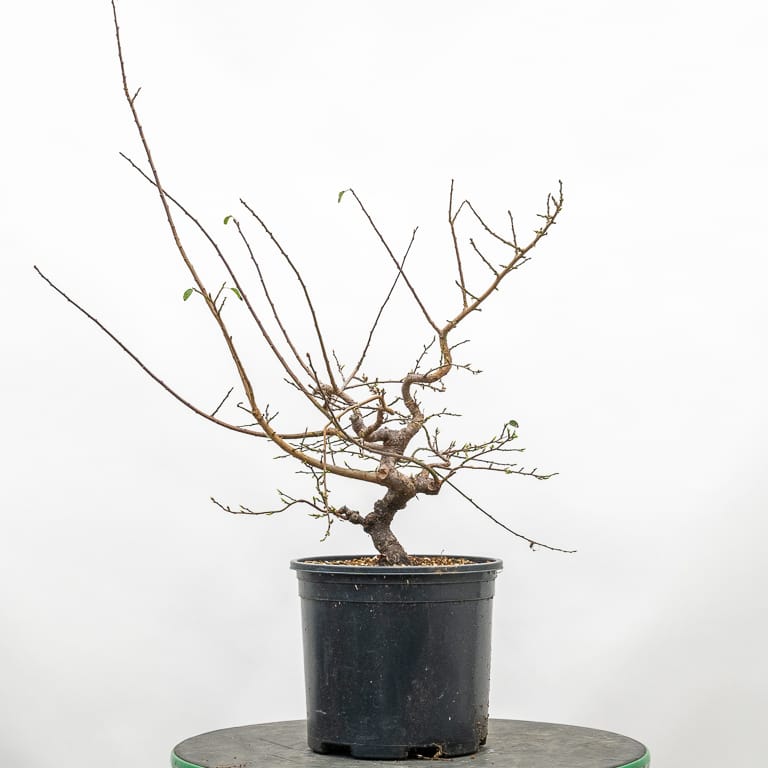
Tree #1 before pruning
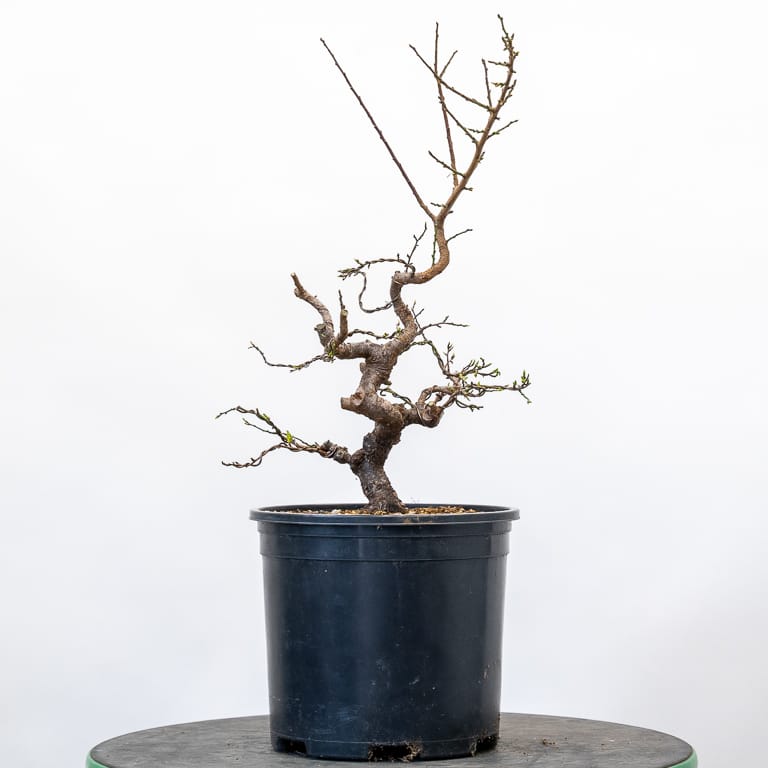
Tree #1 after pruning and wiring
These plums are roughly eight years old and are in the middle stages of development. I want the trunks to get bigger but I don’t know exactly how big I want them to grow.
Having watched the trunks take shape over the years, I’ve had time to think about the style or shape these trees may grow into. My current approach is to focus less on making the trunks fit into a basic style and instead create movement where the branches would otherwise grow straight.
Both straight and curvy growth can be found on plums growing in the landscape, but I’m erring on the side of curvy movement. It’s a cultivated look, but one that reminds me of some of the first plum bonsai I saw years ago.
Here’s another example.
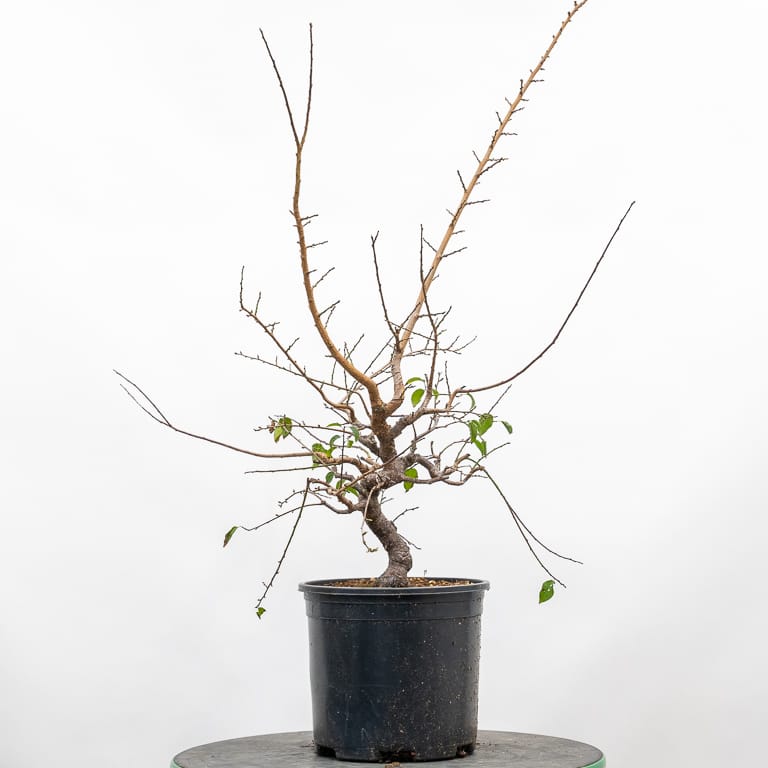
Tree #2 before
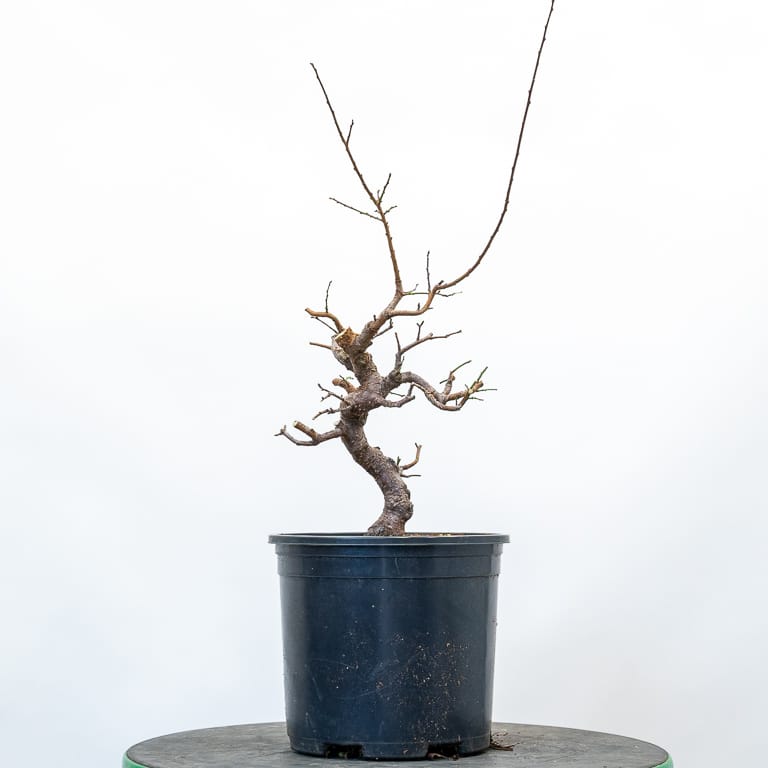
Tree #2 after pruning
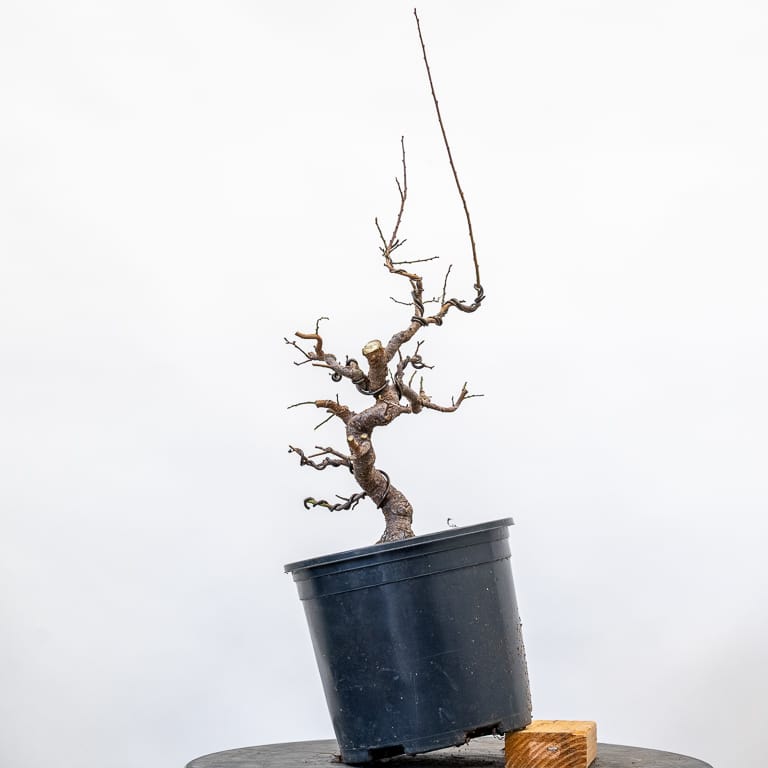
Tree #2 after wiring
These trees have been entirely container grown and are now in three gallon containers. I’d get faster results were they growing in the ground, but it’s easier to work on them in containers.
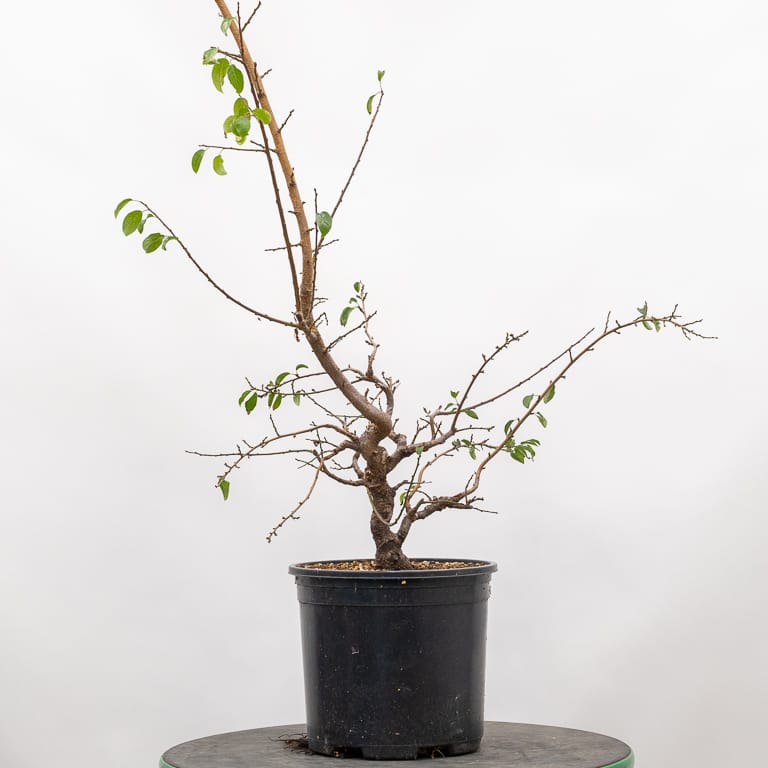
Tree #3 before
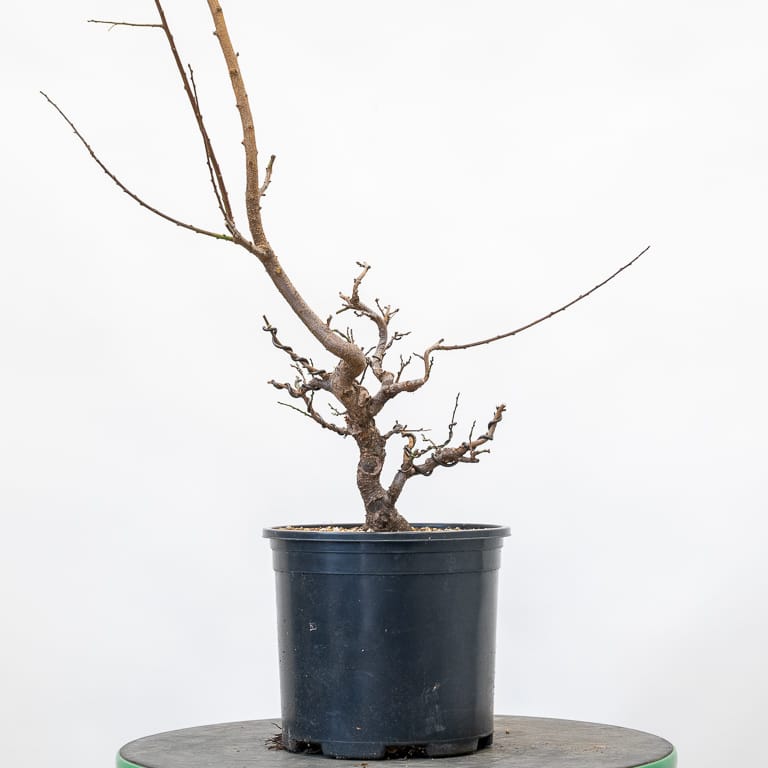
Tree #3 after
The current plan is to let the trunks develop for at least a few more years before turning the focus to branch development. In the meantime, I’ll let the trees grow freely until summer when I’ll check to see if they need pruning and wiring again.
Now Available: Poly Pots!
If you’re looking for inexpensive containers for cuttings, seedlings or other young trees, you might try growing with poly pots. They’re also a good fit for approach grafting as it’s easy to secure the soft containers in tight spaces.
Poly pots
I have an enormous number of these pots so they’re also available in bulk for 20% off. Learn more at the Bonsai Tonight Online Store.
Subscribe to Bonsai Tonight
New Posts Delivered Every Tuesday and Friday
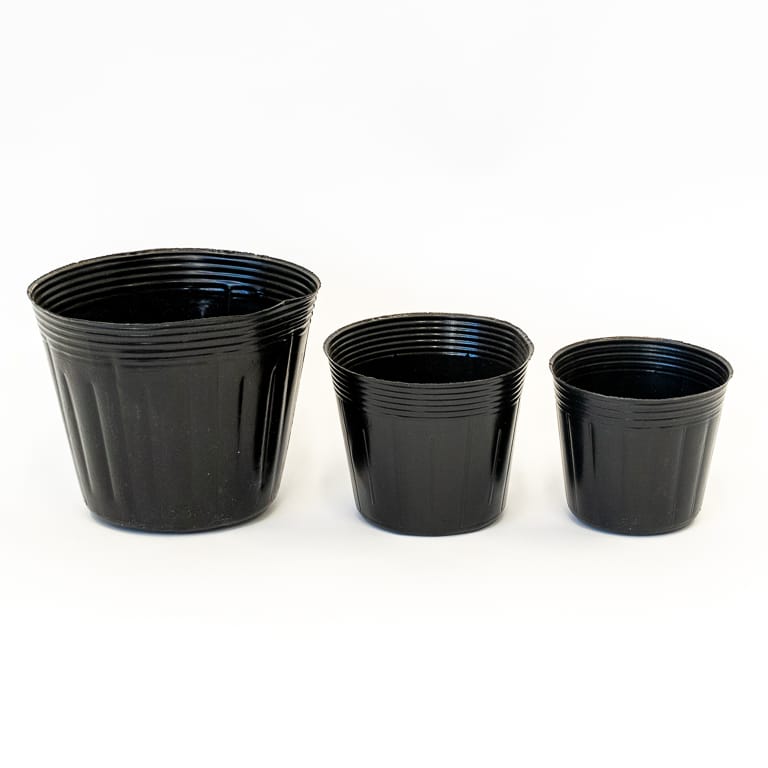
Michael says
Thank you for the very clear photos! I have several maples in a similar stage of development. I notice that where you have removed a large branch, you have left a short stub instead of cutting flush with the trunk. Please explain.
Jonas Dupuich says
Thanks, Michael! I left the stubs to allow the cut area to dry out without dying back too far. I’ll reduce the stubs during the growing season when the tree can produce callus tissue faster.
Michael says
Thank you!
Casey says
Would you be doing this work now if you lived in a colder climate? Can you do this kind of work on most deciduous trees now without concern for die back?
Jonas Dupuich says
Good question – I’d likely have worked on the tree earlier in a cooler climate as the leaves would likely have turned color earlier. Small cuts are likely OK now in cooler areas but that can sometimes lead to bleeding. I’d wait until spring to make larger cuts.
Hilton says
Cool to see these before and after photo’s. Just wondering, it looks like in tree #2 you were going for something higher with the split trunks above where you eventually made the cut. What made you go in the direction you eventually did?
Jonas Dupuich says
Good catch – I removed the leader on the left as it extended the line of the trunk below it. I liked that the trunk on the right took the trunk line in a new direction.
Tia says
Hi Jonas,
thank you for this information.
Last spring I acquired a Japanese plum, which I wired then to give the branches movement. I am in NJ and have already tucked my trees into their winter protection.
Do you prefer/recommend styling Japanese Plums in the fall? What is your opinion about wiring in the spring?
Thank you so much,
Tia
Jonas Dupuich says
I recommend light pruning in fall and heavy pruning in spring, if needed. If you wire in fall you’ll need to protect the tree from freezes over winter as wired branches may be more susceptible to dieback over winter.
Zack Clayton says
Jonas, why do branches wired in winter tend to die back more? The wire doesn’t get any colder than ambient temperature so it must be something else. Could it be that branches wired and set for style don’t have time to heal the cambium breaks that occur in the bending? I leave wire on for the winter that is not cutting in from spring/summer wiring and have noticed no difference in die back in central Ohio. – Any thoughts to share?
Jonas Dupuich says
Fantastic question – the short answer is that wired branches that die over winter likely die because they were already weak or the wiring made them weaker (e.g. too much bending).
Michael Hagedorn has a great discussion of this in ch 31 of Bonsai Heresy.